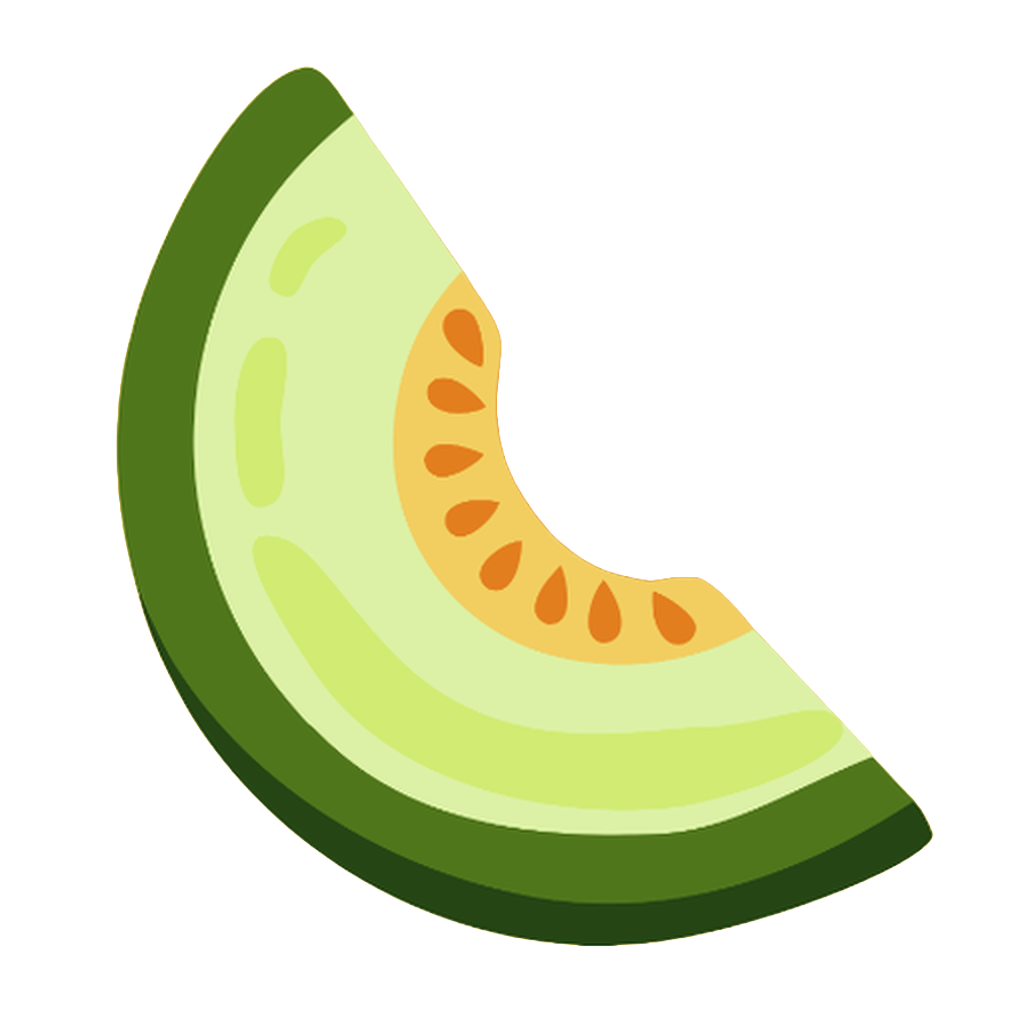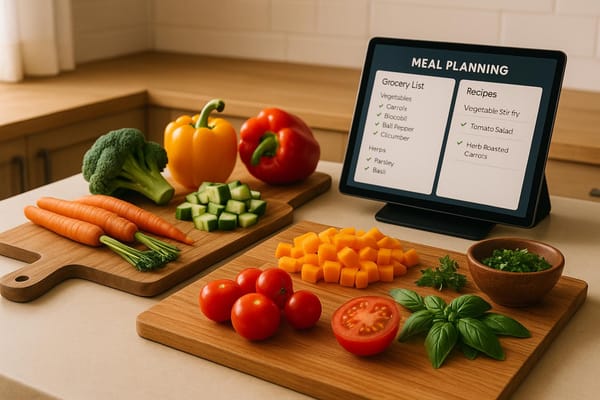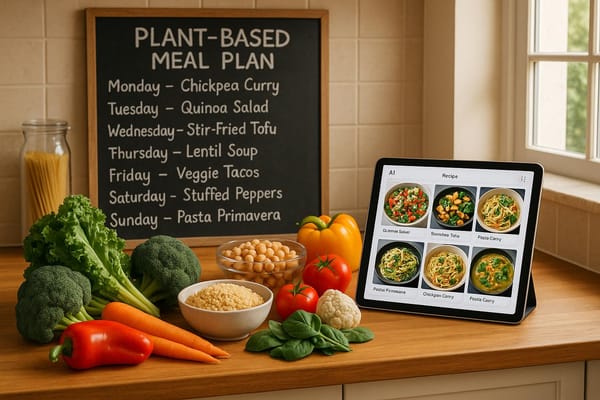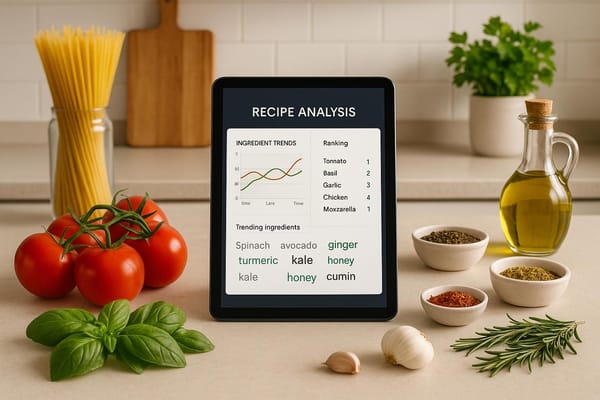How AI Analyzes Long-Term Nutrition Data
Explore how AI enhances long-term nutrition tracking through personalized insights, accurate data analysis, and innovative meal planning techniques.
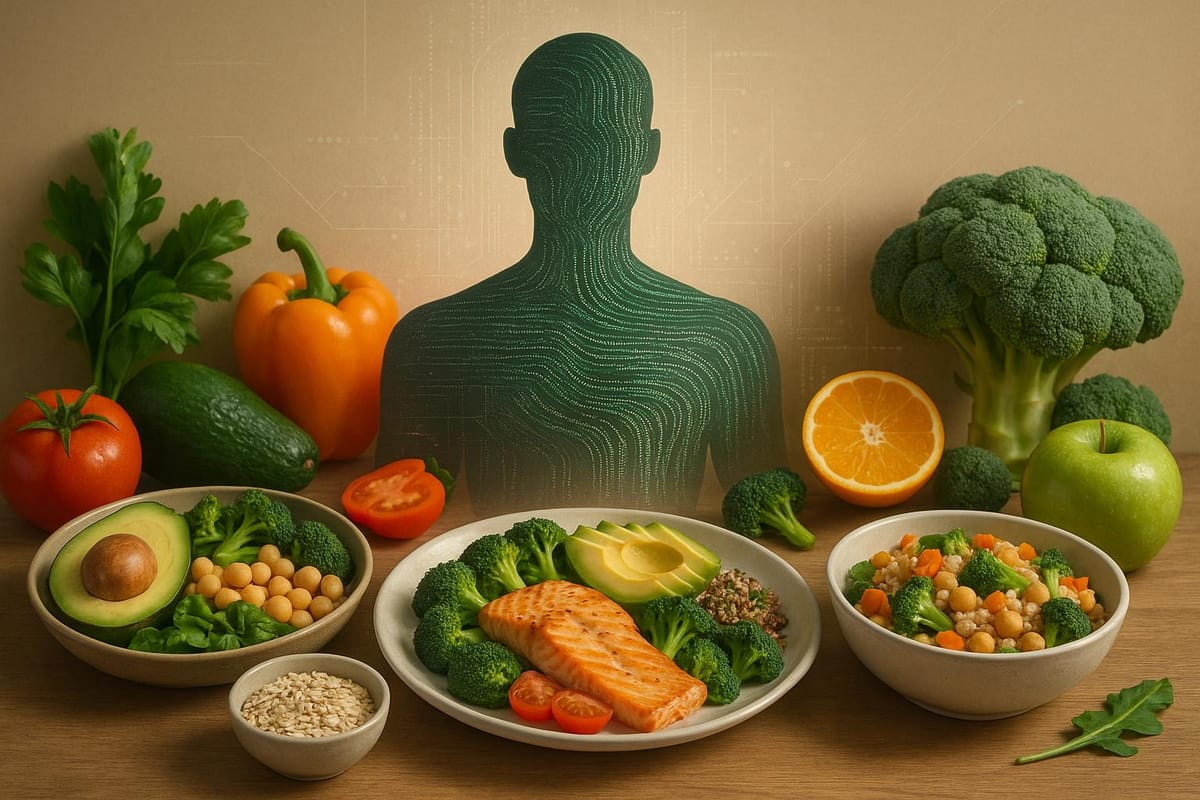
AI has transformed how we track and understand nutrition over time. It simplifies the once tedious process of logging meals, calculating nutrients, and identifying trends in dietary habits. By using technologies like machine learning, computer vision, and natural language processing, AI-powered tools provide accurate, personalized insights that help improve health outcomes. Here's what you need to know:
- AI replaces manual food logs: Tools now analyze meal photos, scan barcodes, or even use voice commands to calculate calories and nutrients instantly.
- Tracks long-term trends: AI identifies patterns, like how stress impacts your diet or seasonal shifts in nutrient intake, helping you make smarter choices.
- Personalized recommendations: From meal plans to ingredient swaps, AI adjusts suggestions based on your unique habits and health goals.
- Improved accuracy: Studies show AI tools reduce errors in calorie and nutrient estimates by over 50% compared to manual methods.
- Health connections: AI links dietary habits to metrics like weight, energy, and blood sugar, offering actionable advice for better health.
Whether it's saving time, reducing food waste, or helping you hit your nutrition goals, AI tools are making long-term nutrition tracking easier and more effective than ever.
From Data to Diet: How AI is Personalizing Human Nutrition (Jose Ordovas)
Core AI Technologies for Nutrition Data Processing
AI has revolutionized how we track and understand nutrition. By combining various technologies, smart nutrition apps can transform raw data into practical insights that make managing diets easier and more effective.
Machine Learning and Deep Learning
Tackling challenges like memory bias and inconsistent tracking, machine learning (ML) identifies patterns that manual methods often miss. ML and deep learning (DL) power modern nutrition analysis systems by uncovering trends in large datasets. For instance, ML algorithms can highlight patterns like changes in protein consumption based on workout routines or seasonal shifts in fiber intake.
Deep learning models take it a step further by using user-specific data - such as age, weight, and health conditions - to create personalized meal plans. In one study involving 4,000 profiles, these models successfully identified allergies, ensured balanced meals, and met specific nutrient goals. AI-based dietary assessments have also shown impressive accuracy, with correlation coefficients exceeding 0.8 for calorie and macronutrient calculations compared to traditional methods, and some systems even reaching 0.97 when compared to professional dietitian evaluations. Over time, as users log more data, these systems adapt, providing alerts when dietary habits deviate from the norm.
Computer Vision for Meal Analysis
Computer vision technology has transformed the way food data is captured. Using convolutional neural networks (CNNs), AI can analyze meal photos to identify food items, estimate portion sizes, and calculate nutritional values quickly and accurately.
This technology works by segmenting images, classifying foods, estimating portions, and linking them to nutrition databases. Advanced models achieve over 85% accuracy in food classification, with some transformer-based systems exceeding 90%. Calorie and macronutrient estimations from these systems have error rates as low as 11–15%. For example, researchers at NYU developed an AI-powered food scanner that provides detailed calorie, fat, and nutrient analysis from a simple photo. Platforms like Honeydew Recipe Manager also use computer vision to let users import recipes directly from images - whether they’re from social media, cookbooks, or personal experiments - making recipe collection seamless.
By integrating these insights with other AI tools, users can build a more detailed and accurate long-term nutrition profile.
Natural Language Processing for Recipe Insights
Natural language processing (NLP) addresses the challenge of extracting nutrition data from unstructured sources like recipes, food blogs, and personal diaries. NLP can analyze cooking instructions, extract ingredient details, and match them to nutrition databases to calculate nutrient values.
For instance, Honeydew Recipe Manager uses NLP to process recipes from various sources, including social media, photos, and websites. The AI extracts key details - such as ingredients, quantities, and preparation steps - and calculates the nutritional breakdown, including calories, protein, fat, carbohydrates, and fiber. Beyond just parsing data, the system categorizes recipes with tags like "Quick & Easy", "Vegetarian", or "Family Favorite", helping users organize their collections based on dietary needs.
With 22,000 recipes saved monthly by Honeydew users, the system continuously improves its ingredient recognition and nutritional calculations. This ongoing refinement allows for more accurate and personalized dietary recommendations over time.
How AI Tracks and Analyzes Long-Term Nutrition Trends
Tracking nutrition over the long haul isn't just about jotting down what you eat. AI systems are exceptional at piecing together data from various sources, identifying patterns over weeks or months, and linking your food choices to your overall health.
Gathering Data from Multiple Sources
AI-powered nutrition tools collect data every time you interact with food. This could be through meal logs - whether you take photos, manually enter items, or scan barcodes at the grocery store. Tools like Honeydew Recipe Manager even import recipes to quickly calculate nutritional details.
Wearable devices take it a step further. They can detect eating habits using wrist movements, jaw motions, or even swallowing sounds, capturing meal frequency and timing without needing you to log anything.
AI also taps into grocery lists and purchase histories, helping to analyze ingredient patterns. When paired with data from health apps or medical records, these insights paint a clearer picture of how your eating habits affect your health.
For example, LogMeal identifies over 1,300 food dishes with 93% accuracy, linking this information to trusted databases like the USDA for precise nutritional data. Similarly, GoCARB uses these connections to estimate carbohydrate content with an error margin of just 10%.
This combination of data sources lays the groundwork for discovering meaningful nutrition trends.
Detecting Trends and Shifts
Once the data is collected, AI algorithms step in to uncover patterns in your nutrient intake. These systems analyze both macronutrients (like carbs, protein, and fat) and micronutrients (such as vitamins and minerals) to spot long-term changes. They compare your current intake to past records and dietary recommendations, flagging any imbalances or shifts.
For instance, Honeydew Recipe Manager tracks daily nutrient consumption - calories, protein, fat, carbs, and fiber - and presents long-term trends through easy-to-read charts. Thanks to advancements in AI, nutrition tracking is now more accurate, with error rates dropping below 20%, making these insights more dependable for health planning. Tools like NutrifyAI further demonstrate this potential, achieving 75.4% accuracy in food detection using advanced models.
Linking Nutrition to Health Outcomes
The final step is connecting these nutrition trends to your health metrics. AI shines here by correlating dietary patterns with factors like weight changes, energy levels, and blood sugar fluctuations. By combining nutrition logs with wearable data and medical records, these systems can track how diet adjustments impact your health over time.
For example, if high-carb meals consistently lead to blood sugar spikes, the AI might suggest tweaking portion sizes or meal timing. Or, if skipping protein at breakfast results in low energy later, it could recommend protein-rich options to start your day.
Weight management also becomes more precise. AI tracks how caloric intake, macronutrient ratios, and even factors like water retention and exercise timing influence long-term weight changes.
This all-encompassing approach turns nutrition tracking into more than just counting calories - it becomes a personalized tool for managing your health effectively.
Practical Insights and Personalized Recommendations
AI systems shine when they take your long-term nutrition data and transform it into meaningful, actionable advice. Modern tools don’t just analyze what you eat - they help you make smarter, more sustainable choices.
Setting and Adjusting Diet Goals
Instead of offering one-size-fits-all advice, AI tailors goals to your actual eating habits. It focuses on gradual, manageable changes rather than overwhelming overhauls.
Take Honeydew Recipe Manager as an example. It uses your historical data to create achievable targets. Let’s say you’re already hitting your protein goals but falling short on fiber. Rather than suggesting an immediate, drastic change, the system might recommend small steps, like adding a serving of whole grains or legumes to your meals.
AI doesn’t stop there. It keeps track of your progress and adjusts recommendations as you go. If you’ve successfully reduced your sodium intake over time, it might nudge you closer to the general guideline of 2,300 mg per day. These small, incremental shifts make it easier to address nutrient imbalances without feeling overwhelmed.
Finding Nutrient Deficiencies or Excesses
AI goes beyond basic calorie counting by analyzing your intake of both macronutrients (like carbs, protein, and fat) and micronutrients (such as vitamins and minerals). It compares your data to established dietary guidelines, like those from the USDA, to flag potential issues.
For instance, if your iron intake consistently falls 33% below recommended levels, the system might alert you. Similarly, it could warn you if your saturated fat levels regularly exceed healthy limits.
Honeydew Recipe Manager makes this information easy to understand by presenting nutrient breakdowns as clear numerical values. Even on its free plan, the calorie and macro calculator helps you see how your daily intake stacks up against your health goals. This detailed feedback empowers you to make precise dietary adjustments where they’re needed most.
Personalized Recipe and Meal Planning Suggestions
Once nutrient imbalances are identified, AI takes the next step: offering tailored meal and recipe suggestions to address those gaps. For example, if you’re low on fiber, the system might recommend adding black beans or whole grains to your meals rather than vaguely advising you to "eat more fiber."
Honeydew Recipe Manager goes even further with its advanced meal planning features. It can import recipes from social media, analyze their nutritional content, and suggest ingredient swaps to better align with your goals. Imagine a recipe that calls for heavy cream - if your saturated fat levels are already high, the AI might suggest substituting Greek yogurt instead.
The app also simplifies grocery shopping by generating lists tailored to your nutritional needs. Instead of a generic list, you’ll get specific suggestions, like potassium-rich foods such as bananas, spinach, or sweet potatoes, or low-sodium alternatives when needed.
This personalization even extends to meal timing and combinations. If the AI notices you have more consistent energy levels after a protein-packed breakfast, it might suggest morning meals that align with your preferences and schedule. Recent advancements in AI have made real-time food detection and nutrient analysis about 75% accurate, further sharpening these recommendations.
Ultimately, this approach feels less like following a strict diet and more like having a knowledgeable nutritionist guiding you toward smarter choices every day. By making adjustments that fit seamlessly into your lifestyle, AI helps you build healthier habits without the stress of rigid rules.
Using AI-Powered Tools for Nutrition Tracking
Switching from manual food logging to AI-powered nutrition tracking has made managing diets much easier. These modern tools take the hassle out of calorie counting and nutrient tracking, offering insights that traditional methods simply can’t match. Let’s explore how these tools work in everyday life and how they’re changing the way we approach nutrition.
Honeydew Recipe Manager: A Practical Example

The Honeydew Recipe Manager is a great example of how AI simplifies nutrition tracking. It turns what used to be a time-consuming task into a nearly effortless process. The app’s smart import feature can pull recipes from social media, photos, or websites and instantly calculate the nutritional content - breaking it down into calories, protein, fat, carbohydrates, and fiber for each dish.
Each month, users save around 22,000 recipes on the platform, creating personalized cookbooks. The app also generates grocery lists with precise quantities and even suggests ingredient substitutions. This level of automation eliminates the manual calculations that often make traditional nutrition tracking such a chore.
Here’s what James L. had to say about his experience with the app:
"The smart grocery lists save me hundreds of dollars a month. I love how it suggests recipes based on what I already have!"
This feedback shows how AI-powered tools bridge the gap between nutrition goals, meal planning, and even budgeting.
Even the free version of Honeydew includes a calorie and macro calculator, making basic nutrition tracking accessible to anyone. This ease of use highlights how AI tools are reshaping the way we approach our diets.
Key Features of AI-Powered Nutrition Tools
AI-based nutrition platforms come with several standout features that make them far superior to manual tracking methods.
- Automatic calorie and nutrient calculation: Using image recognition, these tools take the guesswork out of portion sizes. Whether through a photo, barcode scan, or voice input, they drastically cut down on data entry time.
- High accuracy: Computer vision technology has achieved correlation coefficients above 0.8 for calorie and macronutrient estimates, making it far more reliable than manual methods.
- Ingredient substitutions: When a meal is flagged for high saturated fat, the AI suggests specific alternatives, like swapping heavy cream for Greek yogurt. These recommendations are backed by extensive databases, including USDA resources, ensuring precision.
- Collaborative meal planning: Tools like Honeydew Recipe Manager allow up to six family members to share meal plans and track individual dietary needs, making it easier to plan meals for households.
- Real-time feedback: Unlike static methods, AI tools alert users immediately if they’re close to exceeding daily sodium limits or falling short of protein goals.
Manual vs. AI-Driven Nutrition Tracking Comparison
The table below highlights how AI-powered tools outperform traditional methods:
| Feature | Manual Tracking | AI-Driven Tracking |
|---|---|---|
| Data Entry | Manual input for each ingredient | Automated via photos, barcode scans, and voice input |
| Accuracy | Prone to errors and guesswork | High accuracy with correlation coefficients above 0.8 |
| Personalization | Generic advice based on broad guidelines | Tailored suggestions based on individual habits |
| Real-Time Feedback | Requires manual calculations | Instant alerts for nutritional goals |
| Collaboration | Hard to coordinate with others | Supports household sharing and joint meal planning |
| Shopping Integration | Manual list creation | Automated lists with precise quantities and alternatives |
| Long-term Analysis | Requires spreadsheets or manual tracking | Automatically identifies trends and patterns |
Research shows that AI-based dietary tools reduce recall and reporting bias while saving users significant time compared to manual approaches. These tools also make it easier to track nutrition trends over the long term.
Mark T. shared how this technology has impacted his life:
"I used to waste so much food. Now with Honeydew's meal planning, I buy exactly what I need and save money!"
This example illustrates how AI-powered tools not only enhance nutrition tracking but also tackle broader issues like food waste and meal management.
The technology is advancing quickly. Recent systems, like NutrifyAI, have achieved 75.4% accuracy in real-time food detection, offering instant nutritional analysis through computer vision and APIs. This kind of automation makes long-term nutrition tracking easier and more effective than ever before.
Conclusion
AI is changing the game for long-term nutrition tracking by making it easier and more efficient to gather useful insights. With its precision and automation, users can shift their focus to healthier choices without being bogged down by time-consuming data entry.
Key Takeaways
AI tackles common issues like recall bias and offers real-time feedback. Unlike traditional methods, which depend on users remembering and estimating their meals from days or weeks ago, AI captures data instantly through tools like photo recognition and barcode scanning.
These systems go beyond calorie counting. They pinpoint nutrient deficiencies, connect eating habits to health outcomes, and provide personalized recommendations based on individual needs. This well-rounded approach empowers users to make smarter health decisions.
The benefits aren’t limited to personal health. Platforms like Honeydew Recipe Manager demonstrate how AI can simplify meal planning, cut down on food waste, and even help save on grocery bills. With 1.4 billion people using diet and nutrition apps globally in 2022, it’s clear that smarter ways to manage nutrition are being embraced on a large scale.
And this is just the beginning - emerging technologies are poised to make an even bigger impact.
The Future of AI in Nutrition
The road ahead for AI in nutrition looks promising. Expect more advanced personalization, seamless integration with wearable health devices, and predictive analytics for preventing diseases.
Deep generative models and context-aware algorithms are already making meal planning more precise, factoring in health conditions, preferences, and lifestyle choices. As these tools evolve, they’ll become even better at supporting long-term health goals in ways that feel natural and easy to use.
With automated, sensor-based data collection on the rise, nutrition tracking is set to become even more effortless. Future systems may passively monitor dietary intake through sensors, delivering insights without requiring users to actively log meals. This shift will make it easier for more people to maintain consistent, long-term nutrition tracking while gaining the tailored insights they need for better health.
FAQs
How does AI make nutrition tracking more accurate than traditional methods?
AI is transforming how we track nutrition by simplifying data analysis and minimizing errors. Traditional approaches often depend on manual input or rough estimations, which can lead to inaccuracies. In contrast, AI can swiftly and precisely process vast amounts of information, including ingredient details, portion sizes, and nutritional values.
Take Honeydew Recipe Manager, for instance. This tool leverages AI to break down recipes, monitor nutritional content, and offer practical insights. With such precise data at their fingertips, users can make smarter choices about their diets, helping them build healthier, more sustainable eating habits over time.
How do AI-powered tools create personalized dietary recommendations?
AI-powered tools like Honeydew Recipe Manager take the guesswork out of meal planning by analyzing long-term nutrition data, personal preferences, and dietary restrictions. They craft meal plans tailored to your specific needs, factoring in details such as favorite ingredients, portion sizes, and health goals.
These tools can recommend recipes that match your nutritional targets, generate grocery lists automatically, and even adapt meals to fit a hectic schedule or evolving dietary requirements. This level of personalization makes healthy eating easier while cutting down on time and effort.
How does AI combine data to uncover long-term nutrition trends?
AI systems, such as those powering Honeydew Recipe Manager, are designed to analyze data from various sources to uncover patterns in long-term nutrition. A standout feature of Honeydew is its ability to let users import recipes directly from social media. Once imported, these recipes can be tracked for their nutritional content over time.
With tools like nutrition tracking, AI-generated meal plans, and personalized grocery lists, Honeydew simplifies the process of understanding and improving dietary habits. These features empower users to make smarter choices about their meals and overall health, turning meal planning into a more efficient and informed experience.
